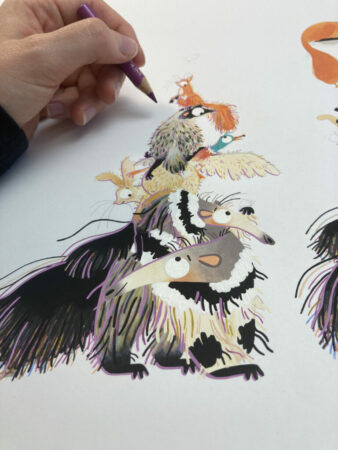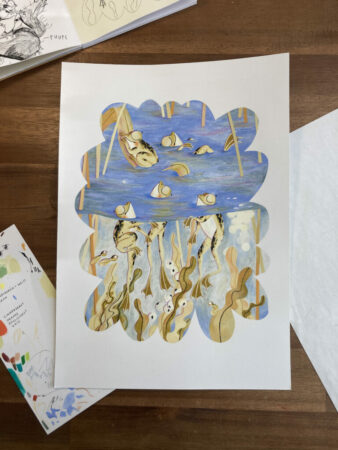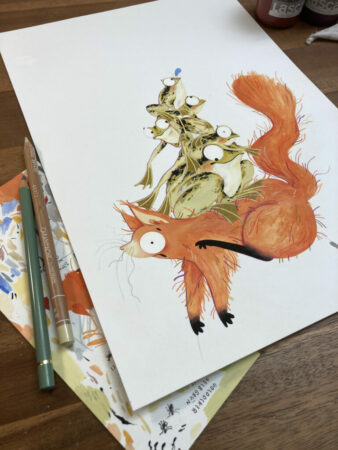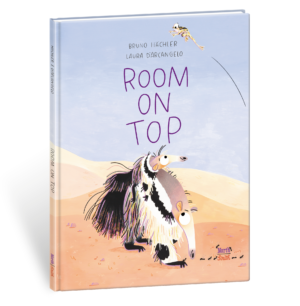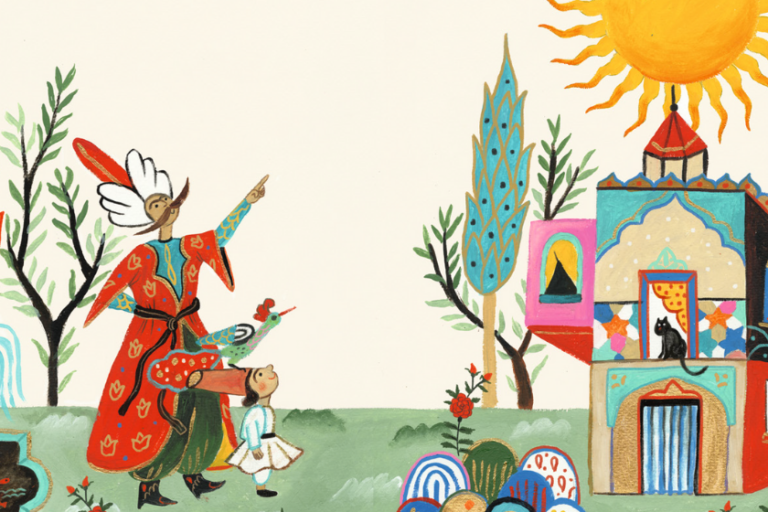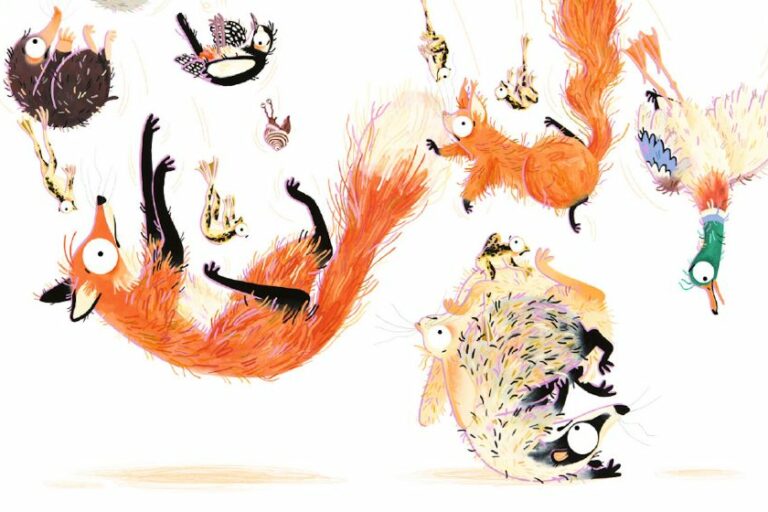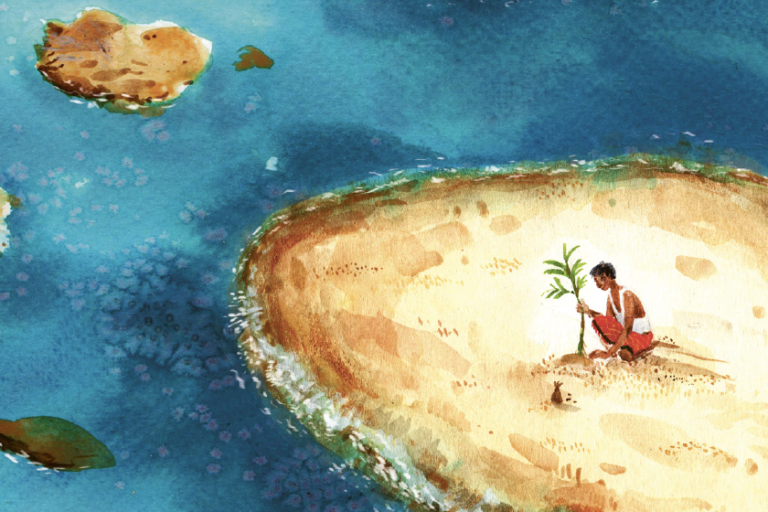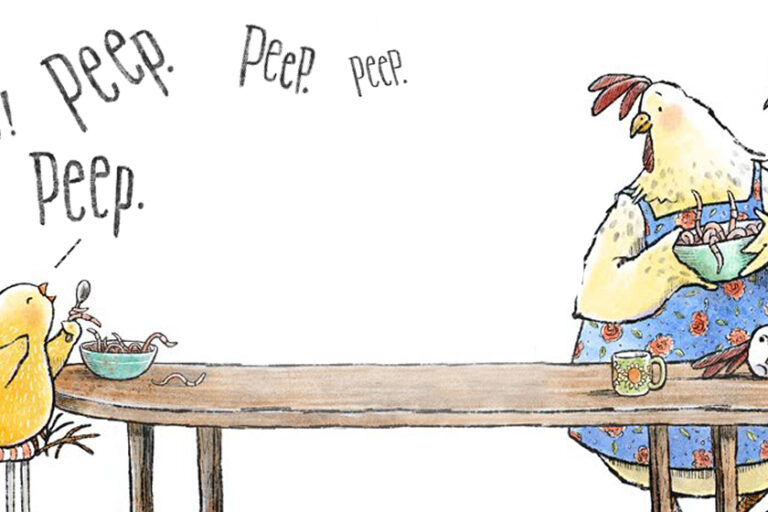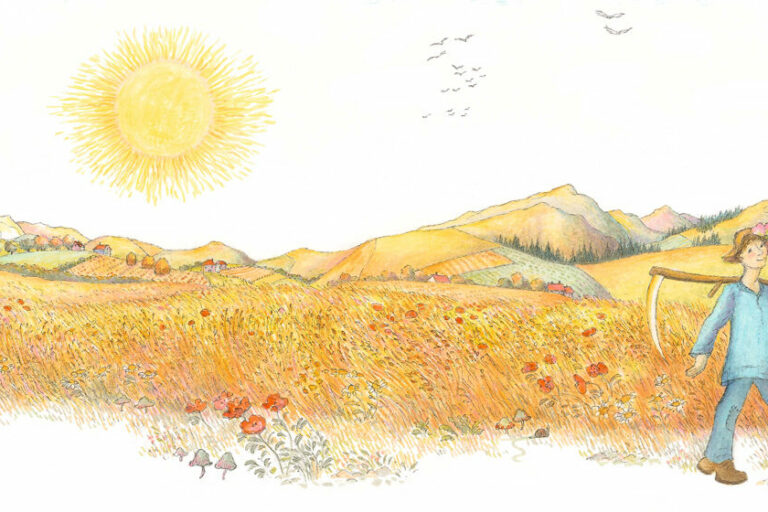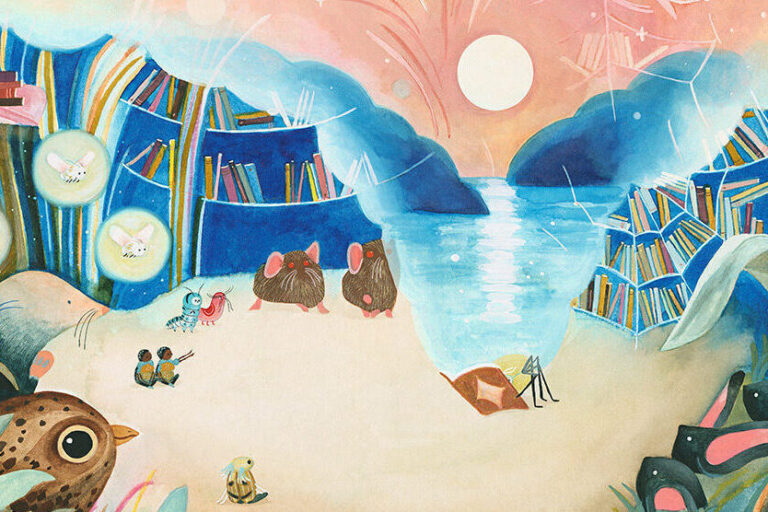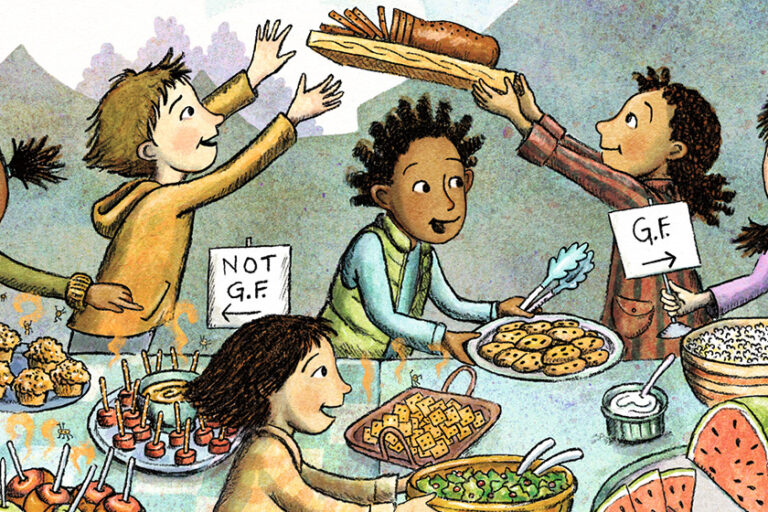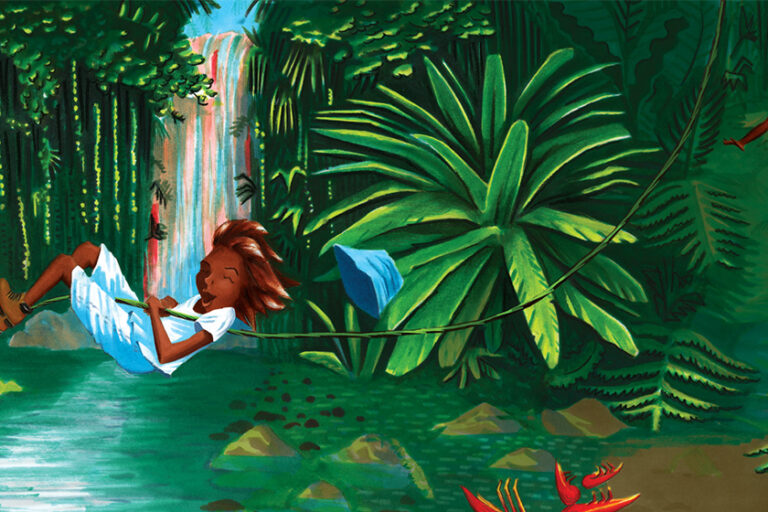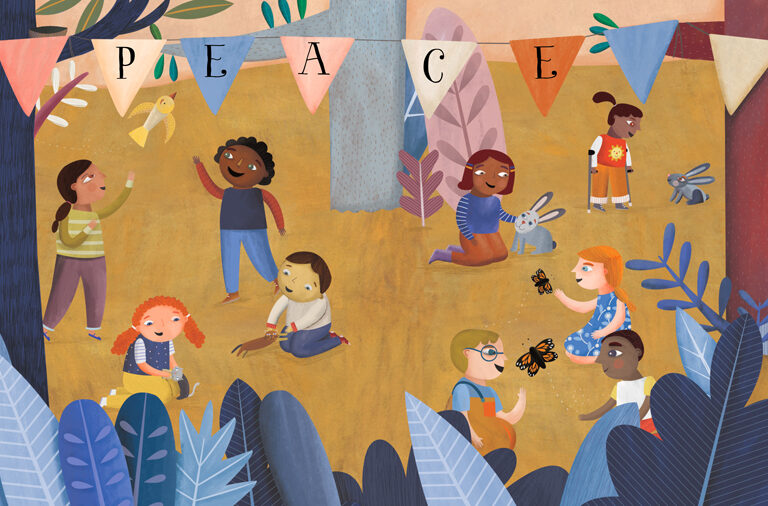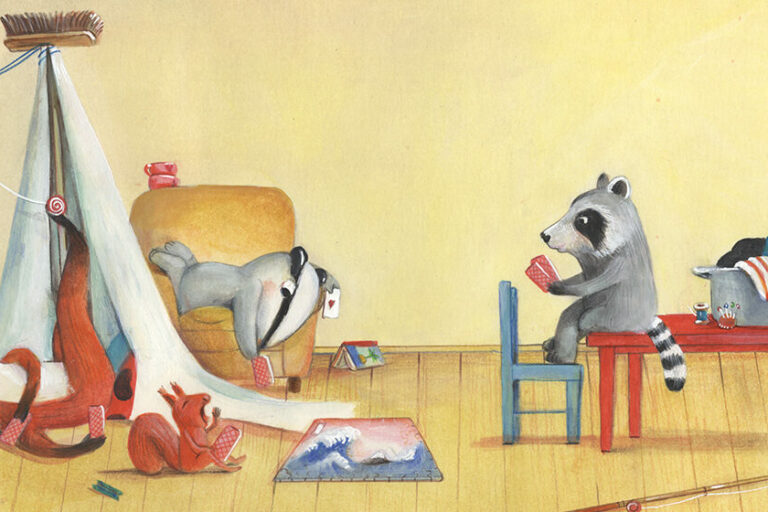A Mile-high Happy Pile
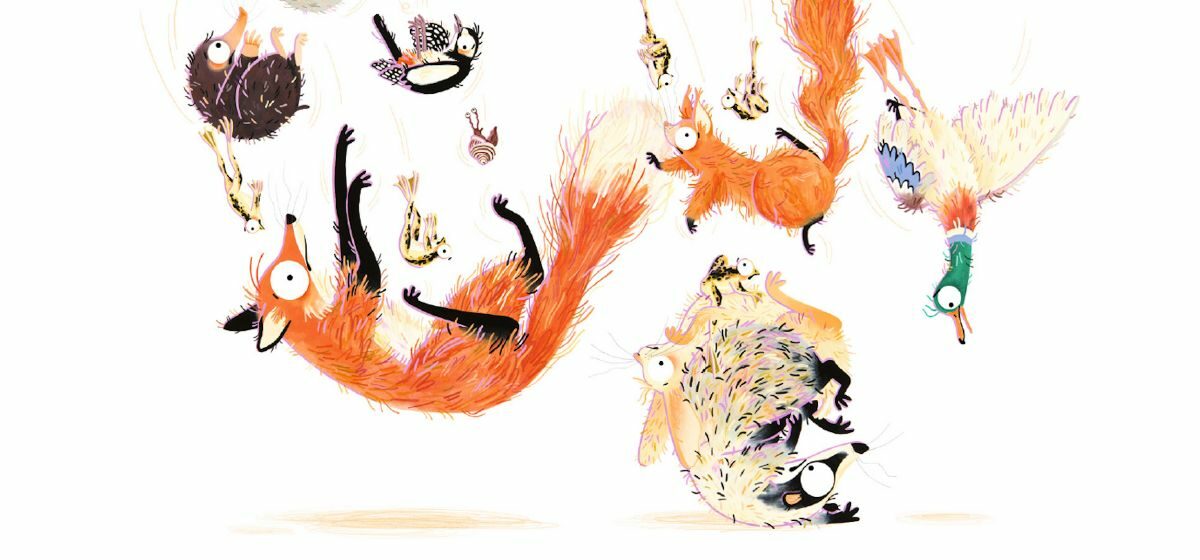
Singer-songwriter and author Bruno Hächler and illustrator Laura D’Arcangelo (Serafina winner 2021) pile up the animals in Room On Top. A young anteater loads one friend after another onto his mother’s back until they form a tottering tower of animals. This cheerful tale is told with gentle humor and an insight into the habitats of all the different animals, while the brilliant illustrations bring it vividly to life. In this interview, originally conducted in German through our parent company NordSüd Verlag, the creative duo share how all the animals came to pile on mama’s back.
Tell us about the creative processes you used when writing and illustrating Room On Top and what gave you the idea in the first place?
Bruno: Room On Top is a story that comes straight from the heart. I got the idea from a photo of a young anteater on its mother’s back. What fascinated me most was the fact that the baby spends almost the whole first year of its life sitting there. Straight away, this conjured up various thoughts and images in my mind. Could there be any better place for an animal to go swinging through its surroundings and dreaming its first dreams? And might there also be some friends who would like to swing along too? The badger, the duck, the rabbit. And what might be the result? A wobbly tower…I wrote the story with a smile on my face. It simply flowed out of me.
Room On Top is a story that comes straight from the heart.
Bruno Hächler
Laura: Of course the first thing I did was read Bruno’s great story, which I did two, three, four, five times! I immediately fell in love with the little anteater, its strong mother and all the lovingly portrayed friends – and I also enjoyed the humor of the story. Then I set about dividing the tale into the number of pages that is normal for a picture book. At the same time I started doing sketches of the animals. I created a little file for each of them, in which I noted or drew its size, favourite food and special characteristics.
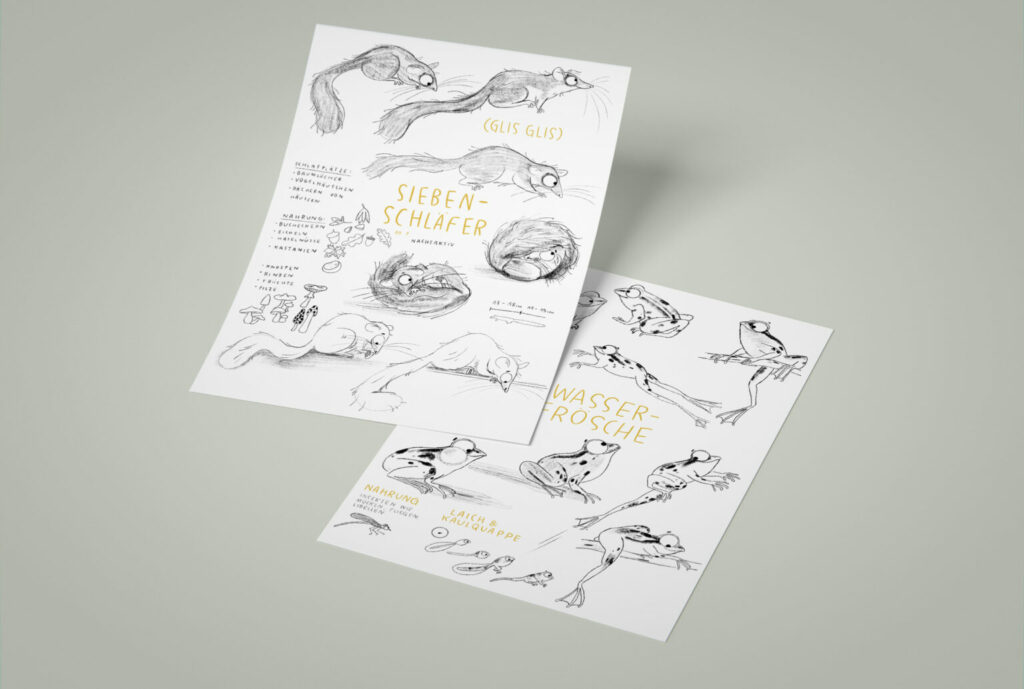
Then I drew my way through the whole story, through narrow, airy, wet and dark dens, deep hollows and sunlit heights, upright and leaning towers. Initially, I drew the whole picture book in black lines, erasing, shifting, making smaller, making bigger, constantly correcting until the basic formats seemed just about right. Then I knew what would be suitable for each individual page – who would sit or stand where, or would hop into the picture, flap, quack, or whatever a duck, a frog, a squirrel etc. would do. I fiddled around to work out how to make them into a pile, and how well or how badly high towers might be able to resist the wind. And when I’d got everything roughly into position, at last I was able to start painting.
What technique did you use for your illustrations?
Laura: I used gouache and crayons on paper, painting, daubing, scribbling and drawing. I like gouache because although the colors are bright, they’re not as shiny as acrylic, and they’re matte when they dry. I also like the feel of it when I run the back of my hand over it. The crayons create a nice flat contrast to the gouache paint, and they simply work better for finer details like strands of hair in an animal’s fur.
What elements of the book were the most challenging?
Laura: I like things to be bright. Really bright, with lots of vivid colors. But right from the start, I was faced with a bunch of animals who all had fur that was grey, brown or black, with a little bit of rust-red here and there. Nothing really bright. So straight away that was a challenge for me. It was also quite tricky to work out how best to fit the animals into a pile. It was important that none of them should be squashed or injured in any way. I was really grateful for the support of the wonderful team at NordSüd Verlag – especially my editor Andrea Naasan and, of course, Bruno himself.
Bruno, what was your first impression when you saw Laura’s pictures?
Bruno: I was enthusiastic! And with each viewing I always found something new. Laura has a lovely sense of humor, and even the tiniest details of the animal pictures convey this sense of fun. She also found a brilliant way of dealing with the fact that a lot of the action takes place in the minds of the animals.
Laura, what was your first impression when you were given the manuscript?
Laura: I was enthusiastic too! I thought and still think the story is brilliant. It’s funny and makes you laugh, but it’s also touching and somehow makes you feel at home. The fact that I was asked to illustrate it made me really jump for joy!
Bruno, what for you is the special attraction of writing for children?
Bruno: I like writing short stories, in which every single word counts. The wonderful thing about picture books is that they also address adults. I always make a bit of an effort to write on two different levels.
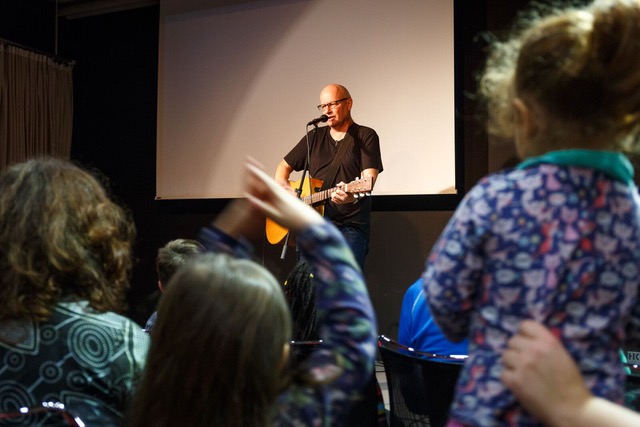
And for you, Laura?
Laura: For me, the nicest thing about picture books is that you can accompany the characters for a short time, but you can stay in their world for much longer. Also that you can create pictures that will appeal to the youngest as well as the oldest of readers! Children are the most wonderful audience, but also the sharpest critics! And so it’s all the more satisfying when you really succeed in bringing a sparkle to children’s eyes – and maybe to adult eyes as well.
Your book is full of lovely humor. What makes both of you laugh?
Bruno: I like subtle, mischievous humor. A cheeky grin more than a loud belly laugh.
Laura: That’s exactly right for our picture book!
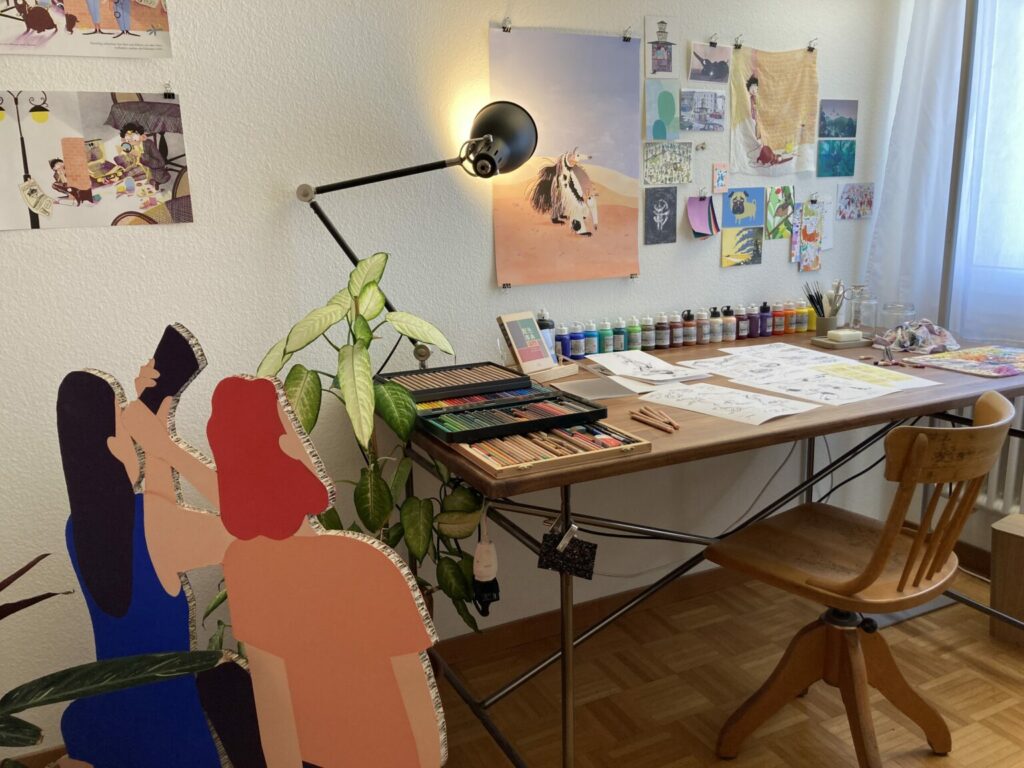
What do you need in order to be able to do your work?
Bruno: Not much: pencil and paper and a computer. Most of all I need concentration, so that I can focus completely on a story or a song.
Laura: I don’t need much either. My tools: that’s a pencil for sketching, an eraser and some paper, and sometimes my iPad as well. To develop the sketches I need one, two, three brushes, a glass of water to dip them in, a cloth to wipe them clean, paper and paints, and again my iPad sometimes comes in handy. I’m also lucky enough to have a wonderful person in my life who always helps me with good ideas, clever solutions to any problems, a critical eye, and affectionate redirections whenever I get lost in the jungle of the picture-book world.
And what inspires you?
Laura: Inspiration is a tricky business. When you look for it, you generally can’t find it. But there are some days when it hides itself in sounds or smells, in the shape of leaves, flowers or weeds you see when you go for a walk. Or it can be in other stories, dreams, castles in the air, the pizzeria round the corner, the pattern of the cloth on the table in front of you – or of course in the beautiful words of an author whose work you’ve been given the privilege of illustrating.
Bruno: You may find inspiration just around any corner. But especially on those long walks in London or Berlin…
